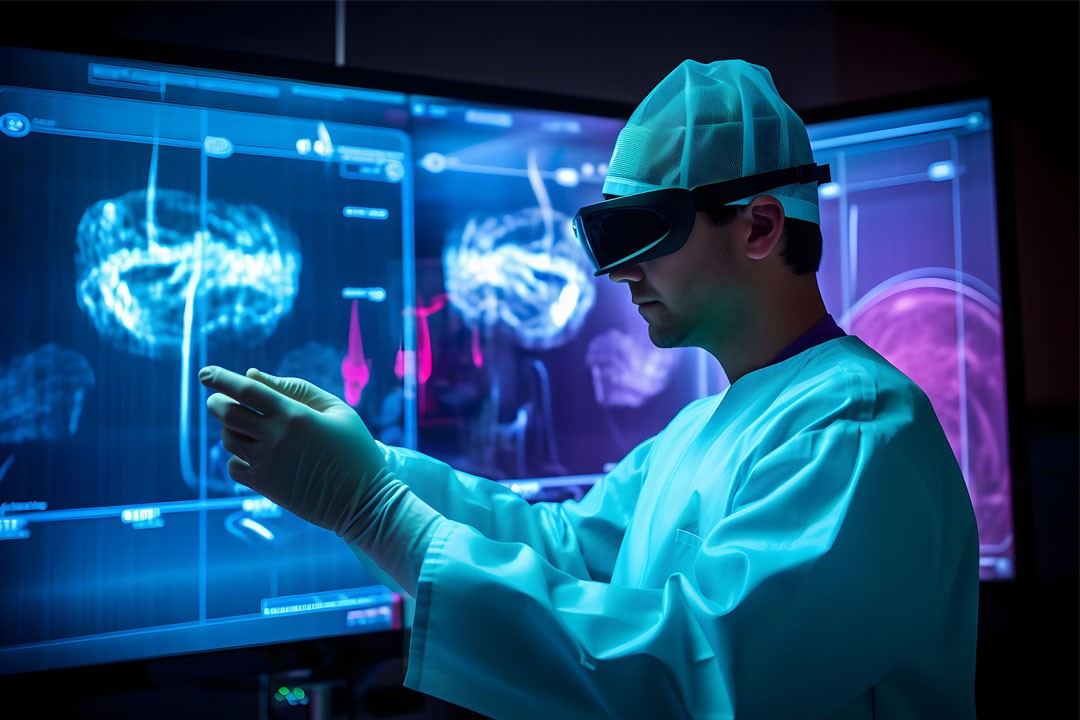Advanced Remote Patient Monitoring: Revolutionizing Healthcare for Optimal Outcomes

25 Jul
2023
Over the last few years, advancements in technology have transformed the healthcare industry, and one such innovation that has gained significant traction is Remote Patient Monitoring (RPM). RPM leverages cutting-edge technologies to enable healthcare providers to monitor patients' health conditions remotely, allowing for enhanced care, early intervention, and improved patient outcomes. This article explores the advantages of patient monitoring and its primary objectives from a business-to-business (B2B) perspective, highlighting the ways in which RPM is revolutionizing healthcare.
Advantages of Patient Monitoring:
- Personalized and Continuous Care:
Remote Patient Monitoring enables healthcare providers to offer personalized care to patients, tailored to their individual needs and conditions. RPM devices collect a wealth of real-time health data, including vital signs, activity levels, medication adherence, and symptoms. This continuous monitoring provides healthcare professionals with valuable insights into a patient's well-being, allowing them to identify trends, anomalies, and potential issues promptly.
- Early Detection of Health Issues:
One of the most significant advantages of patient monitoring is the ability to identify health issues at their earliest stages. RPM devices can detect subtle changes in vital signs or other health parameters, often before patients exhibit noticeable symptoms. Timely detection enables healthcare professionals to intervene promptly, preventing the progression of diseases and avoiding serious complications. This early detection approach is particularly valuable in managing chronic conditions, such as heart disease, diabetes, and respiratory illnesses.
- Remote Accessibility and Convenience:
For both healthcare providers and patients, RPM offers unparalleled convenience and accessibility. Patients can be monitored from the comfort of their homes, reducing the need for frequent hospital visits and lowering the risk of exposure to healthcare-associated infections. Healthcare professionals, on the other hand, can remotely access patient data and analyze trends, making informed decisions without being physically present at the patient's location. This level of remote accessibility saves time and resources, benefiting both parties involved and enhancing overall healthcare efficiency.
- Enhanced Chronic Disease Management:
Chronic diseases often require long-term management, and RPM plays a vital role in optimizing this process. Patients with conditions such as diabetes, hypertension, or heart disease can have their health status closely monitored through RPM devices. Healthcare providers can track fluctuations in key metrics, like blood glucose levels or blood pressure, enabling them to adjust medication dosages or treatment plans as needed. This ensures that chronic patients receive timely adjustments in their care, leading to better disease management and improved quality of life.
- Data-Driven Decision Making:
RPM generates a vast amount of patient data, providing healthcare providers with a comprehensive view of a patient's health status and historical trends. This data-driven approach allows for evidence-based decision-making, fostering more informed and precise medical interventions. By analyzing aggregated data from multiple patients, healthcare organizations can identify patterns and optimize treatment protocols, leading to improved patient outcomes on a broader scale.
As per a recent report by Allied Market Research, the remote patient monitoring market is projected to lay forth a considerable CAGR from 2021 to 2031.
Main Objectives of Patient Monitoring:
Improving Health Outcomes:
The primary objective of patient monitoring is to improve health outcomes significantly. By closely tracking patients' health data, healthcare providers can detect potential complications early on, allowing for timely interventions. This approach reduces hospital readmissions, shortens recovery times, and enhances the overall quality of care, ultimately leading to better patient outcomes and increased patient satisfaction.
Reducing Healthcare Costs:
RPM also aims to address the rising costs of healthcare by preventing avoidable hospitalizations and emergency room visits. By intervening early and proactively managing chronic conditions, healthcare providers can minimize the need for expensive medical procedures or treatments. Additionally, remote monitoring reduces the burden on healthcare facilities and personnel, leading to more efficient resource allocation and cost savings. By focusing on preventive care and timely interventions, RPM can contribute to a more sustainable healthcare system.
To sum up, Remote Patient Monitoring has emerged as a game-changing technology in the healthcare industry. As RPM continues to evolve, its impact on healthcare delivery will undoubtedly shape a more efficient, patient-centric, and cost-effective future for the industry.

Koyel Ghosh
Author’s Bio- Koyel Ghosh is a blogger with a strong passion and enjoys writing in miscellaneous domains, as she believes it lets her explore a wide variety of niches. She has an innate interest in creativity and enjoys experimenting with different writing styles. A writer who never stops imagining, she has been serving the corporate industry for the last five years.
Medical Rehabilitation Services Industry: An Emerging Sector with Promising Growth Opportunities
Avenue: Entire Library membership of Allied Market Research Reports at your disposal
- Avenue is an innovative subscription-based online report database.
- Avail an online access to the entire library of syndicated reports on more than 2,000 niche industries and company profiles on more than 12,000 firms across 11 domains.
- A cost-effective model tailored for entrepreneurs, investors, and students & researchers at universities.
- Request customizations, suggest new reports, and avail analyst support as per your requirements.
- Get an access to the library of reports at any time from any device and anywhere.
Related Post
-
How are Submarine Cables Transforming Global Connectivity with Enhanced User Experience?
-
Endoscopy Procedures: Transformations in Techniques and Applications
-
AI-Powered Video Analytics: How the Product Actually Works for enterprises
-
Painting Robots: Transforming Precision Coating and Creative Applications
-
Innovations in Pharmacovigilance Systems Advancing Patient Safety
-
Understanding Edge Security: Keeping Data Safe Near the Source
-
Exploring the Use and Advancements of 3D Laser Scanners in Professional Applications
-
Reinforcing Industrial Controls with Smarter Tools and Training








